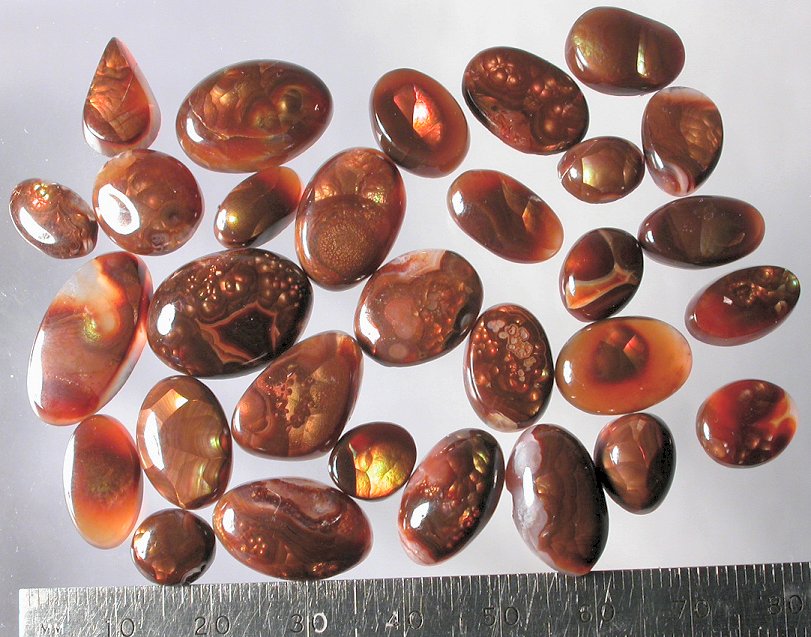Fire Opal
Opal is a gem of great antiquity, and comes in two general categories: common opal, also known as “potch,” and “precious opal.” The name “opal” (opale French, opalo Spanish or Italian) is derived from the Sanskrit word “upala” the Greek word “opallios,” and the Latin word “opalus;” all meaning “precious stone.”
There are two categories of opals – common and precious. The Precious opals are composed of three groups: white, black, and fire opal.
Fire opal is an unusual variety of opal from Mexico. You will find two main types of fire opal. One is a translucent yellow, orange or red with no play of color. The other is brownish and has a play of color somewhat similar to the better known precious opal. Fire opals, like all opals, are delicate gemstones, sensitive to stress. Thus they are best suited for earrings, brooches, and pendants and need to be treated carefully.
The Opal contains the colors of all other stones. It can be charged with every type of energy for use in magic spells. Opals have been carried for invisibility. They are also a protection stone used during astral projection. Moreover, fire opal helps relieve energy deficiencies; stimulates sexual organs and the adrenal glands.








